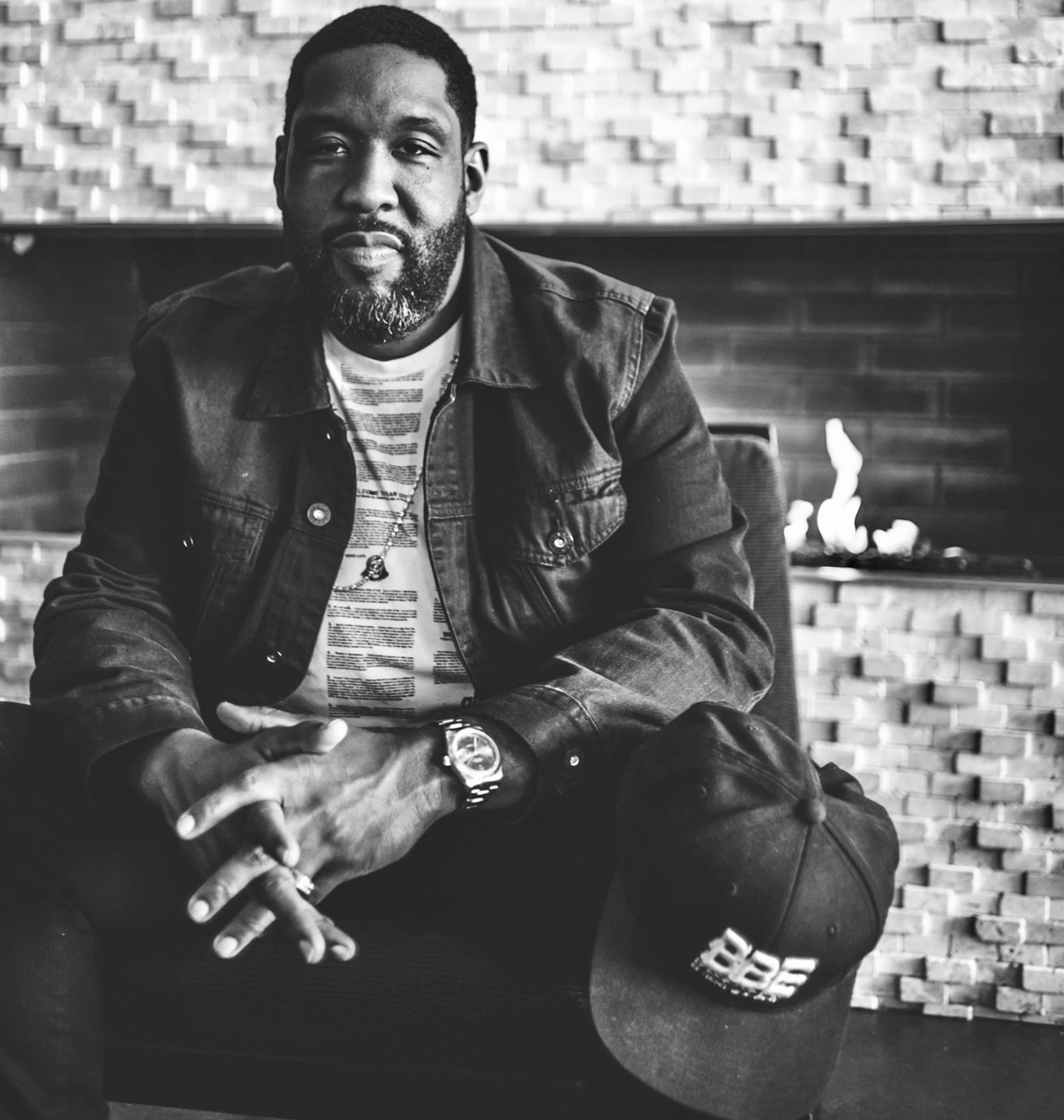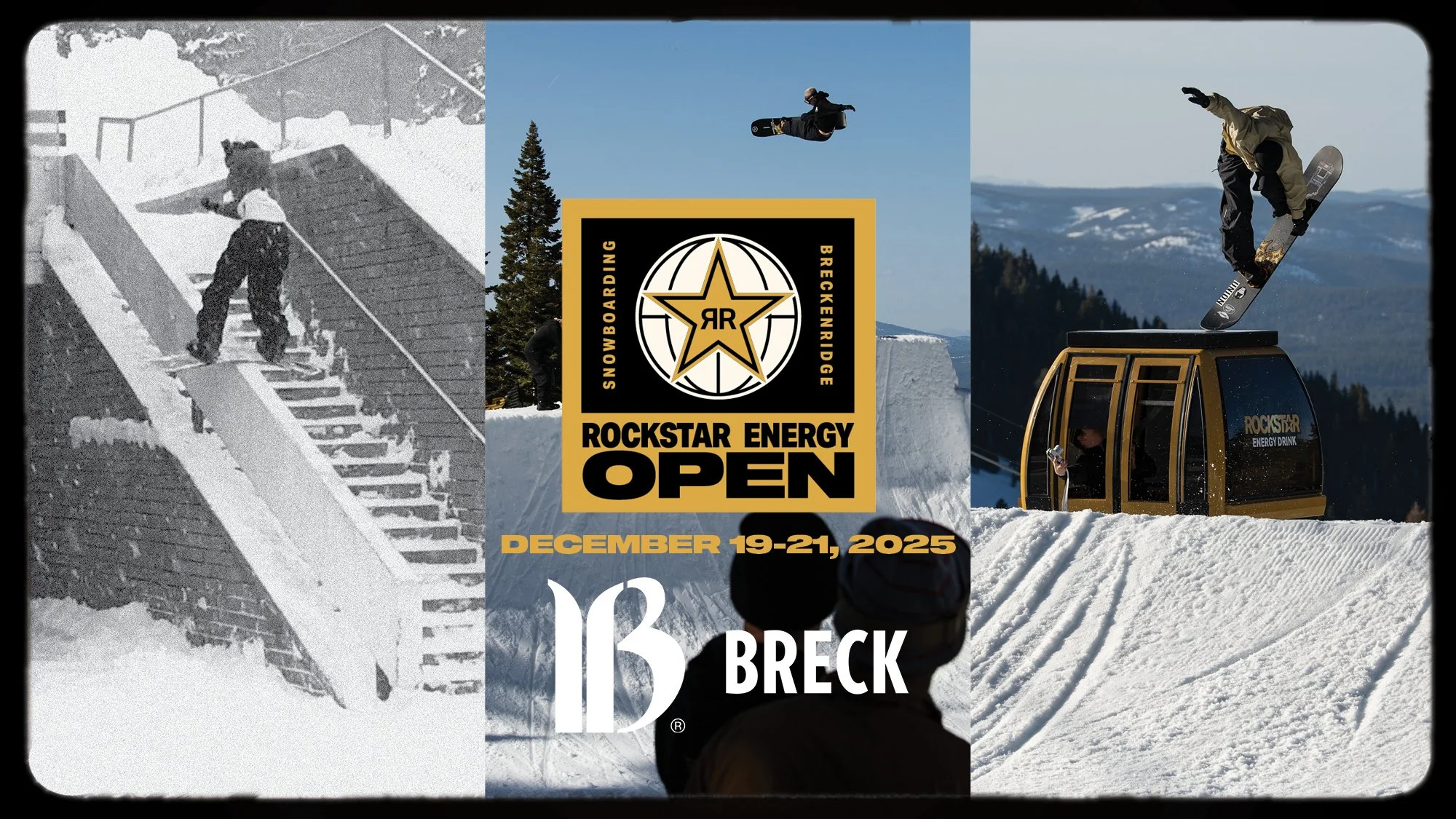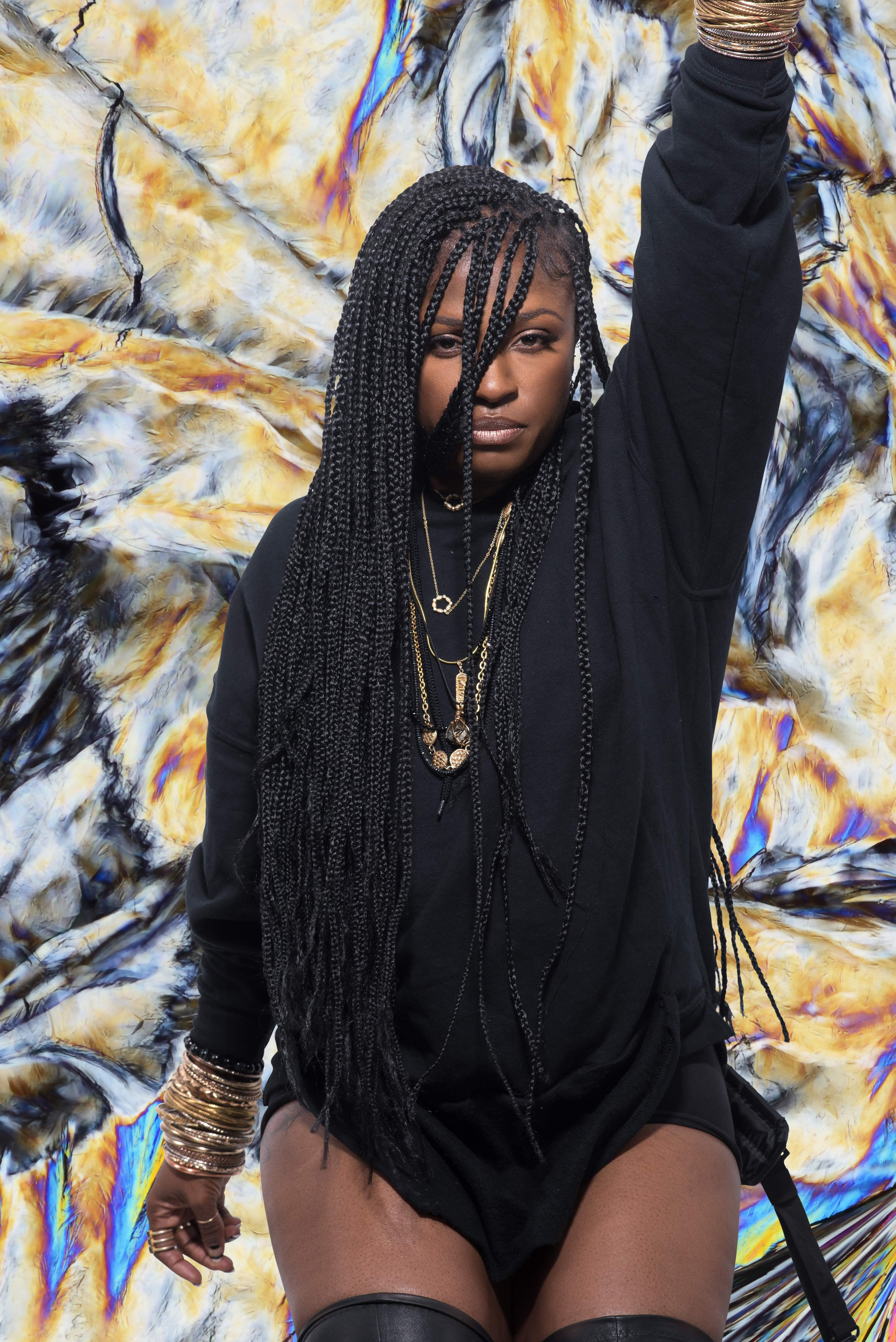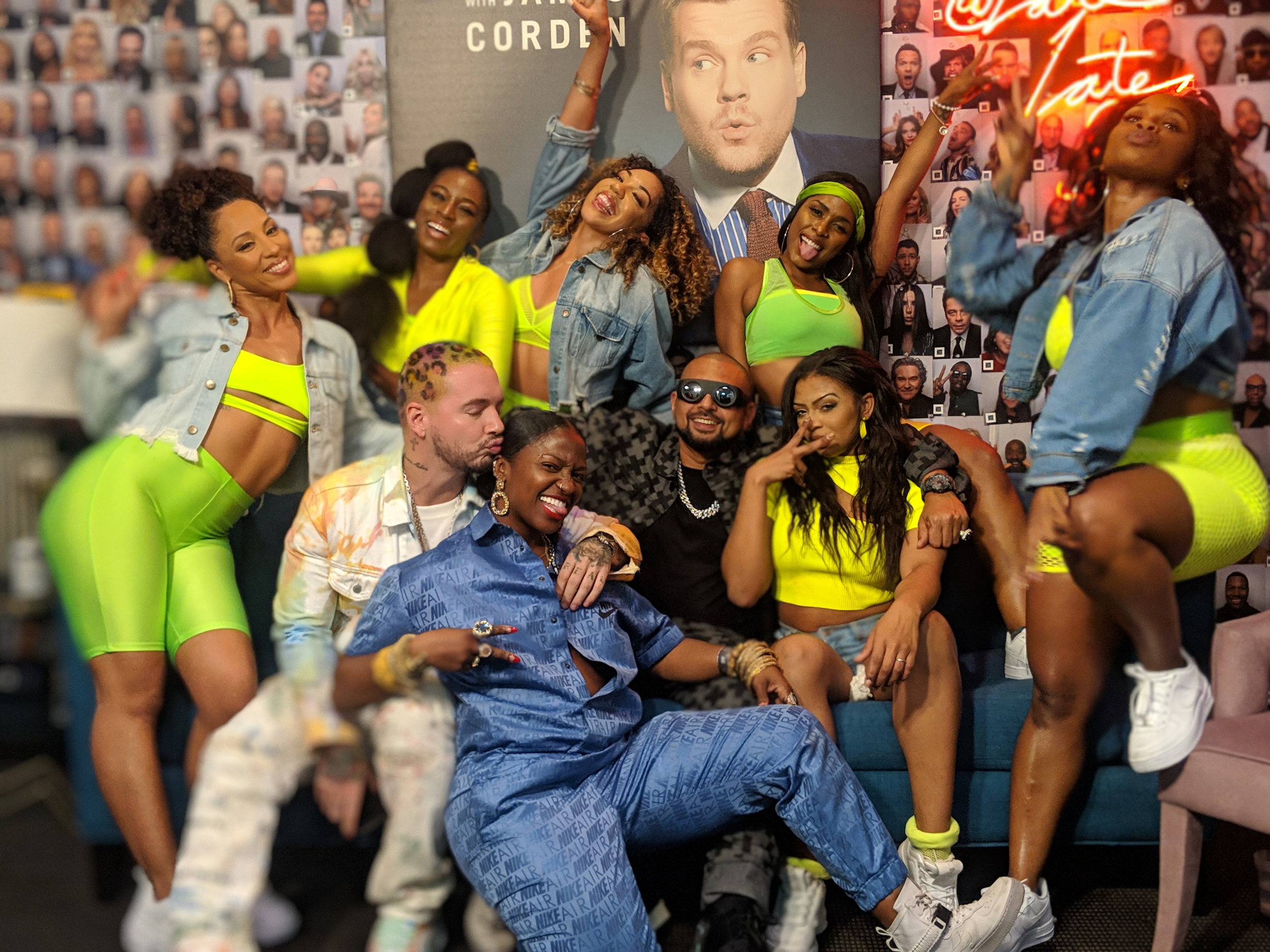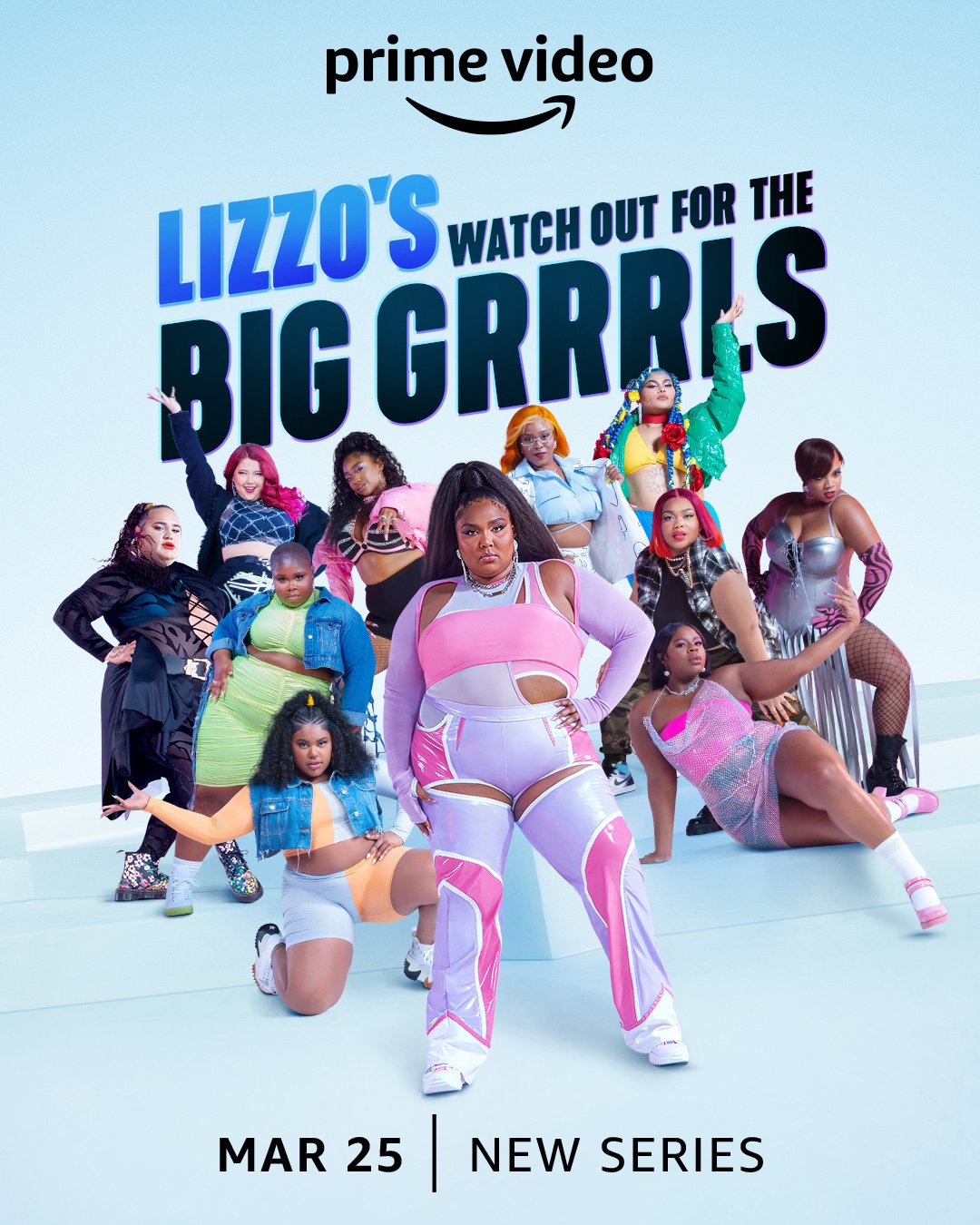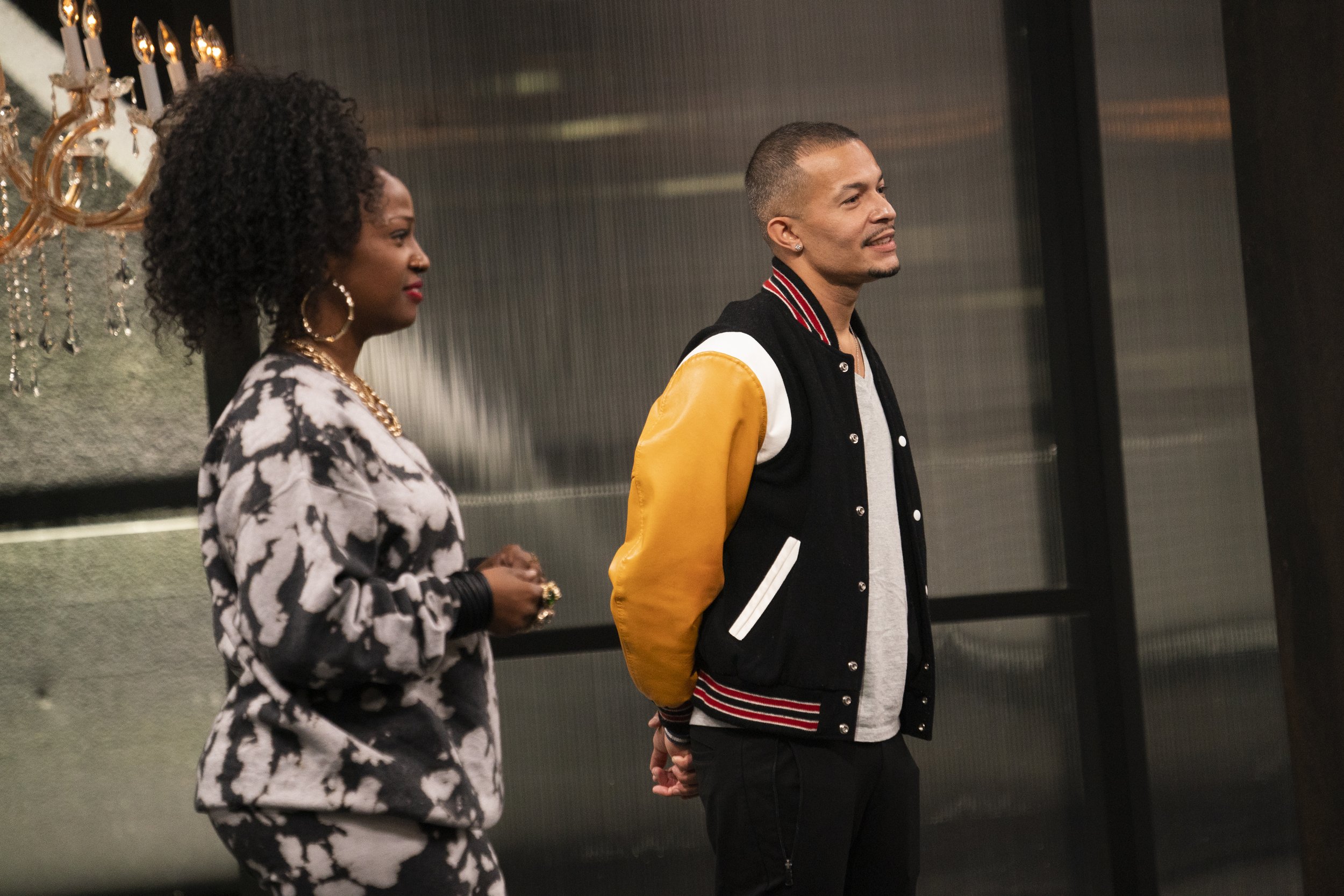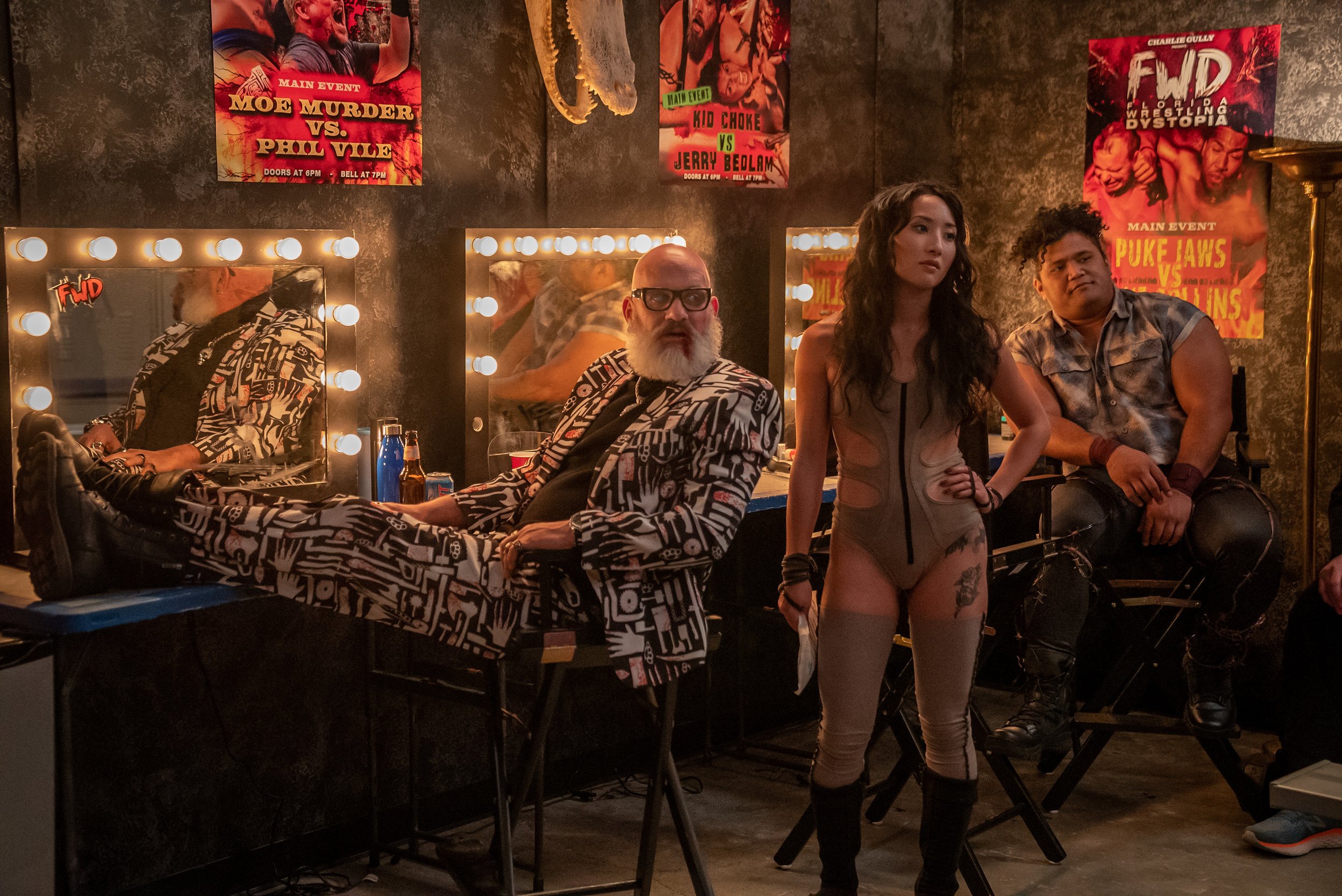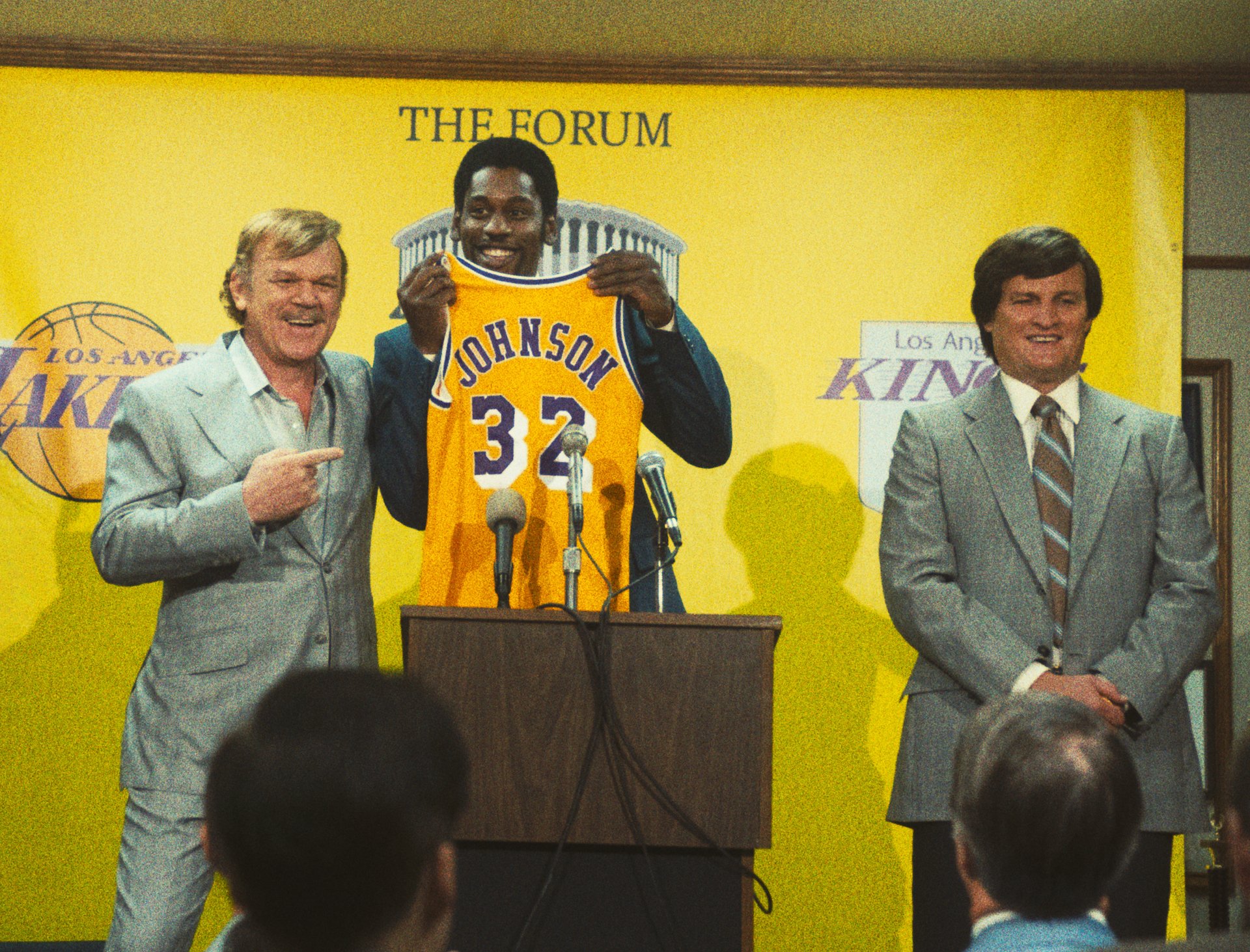When we watch our favorite performances, there are so many people involved that make these shows come together. The Music Director has a birds eye view and is integral in making sure the components come together, keeping all the teams in lockstep with one another and being able to translate the artist's vision to what we see.
When you have a MD that is also musician and can play across genres, you really have someone that is multi-talented! We caught up with Adam Blackstone a bassist who has performed with Jay-Z, Dave Chapelle's Block Party, Justin Timberlake, Janet Jackson and so much more. He has also been the MD for a number of the entertainers above including Nicki Minaj and Rihanna - sometimes playing with these artists and more. In addition, this man has been the MD behind the historic Pepsi Super Bowl LVI Halftime Show featuring Dr. Dre, Snoop Dogg, Kendrick Lamar, Mary J. Blige and Eminem and will be back again when for the Apple Music Super Bowl LVII Halftime Show with Rihanna hits the stage for this moment of sports meets music. In this position, he has helmed the OSCARS, NBA All Star Weekend, The Masked Singer and more.
In addiiton to being in the industry for decades with a coveted list of talent that he has worked with, he just released his debut album Legacy last fall and his single 'Round Midnight’ with Jazmin Sullivan has been nominated for a GRAMMY which takes place next month! To ensure that he can continue to grow his brand and fingerprint on the industry, he also talks about how he supplies an array of talent from musicians, engineers and background singers to our favorite artists through BASSic Black Entertainment.
With some busy days ahead, we wanted to find out about how he found his way into the music industry, his love for bass, being a musician as well as a MD and what he has coming up.
ATHLEISURE MAG: What was the moment when you fell in love with music?
ADAM BLACKSTONE: That’s a great question! I think from birth! With my family, I was always surrounded by music, my father is a musician. What we would call today, probably a wedding band singer, but he did weddings, bat mitzvahs, church services, banquets, and all of that. Then, growing up in Black church, my mom and my family was heavy into choir and music ministry. I think that early early African American church experience allowed me to see the power that the music played in the emotional and psyche of human beings in general. Fast forward to me going to high school and getting some jazz band awards and all of the accolades and the praise and being a little bit turned on by that as well. It made me want to excel and to show Black excellence. Of course, fast forward to really my first major major gig was Jay-Z on stage at Madison Square Garden. There was nothing like that feeling! So those 3 instances for me were very much spread out, but were very much so similar feelings you know?
AM: Yes. What drew you to wanting to play bass?
AB: Funny story, I started as a drummer. I think every little Black boy in church as a musician wants to play drums. When we moved to a suburb in town - Willingboro, NJ, again, the band teacher who was white, I’ll never forget when he said, “listen, I have 14 drummers. I heard about your family, I hear about your musical lineage that you have and our band is missing a bass player.” This was in 2nd grade and he said, “I would love if you would switch over.” I said, “hell naw, I’m not doing that bro!” This was back in the day when you had to walk to school and all of that and I wanted to walk with my drum sticks – I didn’t want to walk with a bass! He talked to my parents and we made the switch and honestly, it was one of the best decisions that I had ever made of course!
So that is what introduced me to bass and that instrument in general allows me to be the foundation and the root of all of the chords that are being played. I learned that a little later on. Drums is the rhythm, but bass is really the melody and it controls the chordal structure. Me being the future MD that I was, I think that I like a little bit of the control!
AM: I like how one decision really made all the difference!
You have worked with so many people from Rihanna, The Roots, Justin Timberlake, Maroon 5, Jay-Z and even across genres.
AB: Yes!
AM: How do you approach when you’re working on these projects as they all have different needs and different focuses in terms of when you’re coming in as the musician role.
AB: I think that the biggest thing is that they allow me to be able to be myself, to be creative, allow me to present them with ideas, but also knowing that I am protecting them. They know that I am taking their vision and just trying to enhance it a little bit. As musical director and crossing genres specifically, it’s not about my vision, it’s about the artists’ vision. We’re all a team. If they win, we win. If they’re hot on stage, if their tour is hot, it allows for more opportunities for me as well! So, I always pride myself on asking the artists what they need, what they want and how I can be a vessel to enhance that vision across genres, that respect is given and so they allow me to, you know, continue to be as successful as I am.
AM: Tell me about your debut album Legacy which came out last fall!
AB: Yessss Legacy, Legacy! It was a labor of love for sure! We all went through that pandemic, and you know, we lost some folks. I lost a couple of good friends of mine, I lost a cousin and going through to their services, I realized that I didn't want to leave this Earth with a laptop full of ideas – you know what I’m saying? I heard Jazzy Jeff say, “leave here empty.” So, I was really inspired by loss and I buckled down for about 40 - 45 days and returned to my roots and one of my first loves is jazz and really progressive jazz. I decided what songs I wanted to do and really saw which artists were being impacted by me for a long time and how they wanted to pay it back to me by hopping on my album. Everybody from Kirk Franklin to Mary Mary to Jazmine Sullivan to Jill Scott to Queen Latifah. The list goes on and on! I made that one phone call and they said, “absolutely, whatever you need,” because they know for the last 20 years, I have answered their phone calls and said the same thing. You know what I mean? It’s what I like to call, Relationship Equity! It’s been really cool. We went Billboard #1 on Legacy, the single got a GRAMMY nomination, we are Image Award nominee now for 2023 and going on tour opening for Jill Scott this spring. I’m very excited about that that Legacy continues to hopefully impact people and to become part of their legacy as well. I really did it to inspire.
AM: That is amazing and I really love when you are talking about Relationship Equity, as I have definitely dipped into that pool many times and let them know that for the times I reached back, I needed it for what I was working on.
AB: Even with that, to the right person, you don’t even have to say that because they know what you’ve done and the value that you have added to their legacy, you know what I’m saying? I’m very grateful for God giving me the foresight 20 years ago, didn’t know I would be here doing a record. I was nice to people, I was a good character person, I had integrity and so now when I make these calls, it’s been no issues. I’m super thankful for that!
AM: So are you thinking about your next album?
AB: Legacy 2, I’m definitely thinking about it for sure!
AM: In addition to being an artist and a musician, you’re a noted Music Director. Can you tell us what a Music Director does?
AB: No problem. As an MD, my job is to curate everything live music oriented from stage, to lighting, to choreography, to programming – basically build that live experience for the viewer. So it starts by me sitting with the artist and seeing what story that they want to tell through their set list. Sometimes we have 2 hours and then for things like the Super Bowl, we have 13 minutes, you know what I mean? From there, I do a lot of hiring of the band, backgrounds, engineers and then I rehearse the band and then it’s everything from me going to choreo rehearsal, lighting rehearsal to make sure that their cues line up with the music cues. So that gives that total overall experience and that’s essentially what a music director does from arranging, to scoring to creative on the stage.
AM: When you’re doing that, is it hard for you to wear two hats when you’re actually playing as well as being the Music Director?
AB: That’s a great question. I have to be honest and say, that it’s easier for me to be able to do the two hats because I speak through my instrument. That allows me to have a little bit more of a fluent language if we use that analogy, because I can get the ideas out while playing. Sometimes, if I’m just coming in to oversee and there is another band like Maroon 5 or something like that - when I do Tim McGraw, he has his own band, it’s like I have to adapt to their language. Either way it’s cool, but I have to say that the two hats actually because of my musicianship and I’m thankful for that, it lets the MD job be a little easier for me!
AM: It’s amazing to think about the fact that you were saying that whether someone is going on a tour, last year’s halftime show for the Super Bowl and you were also involved with The Masked Singer as well which is a TV show. That’s a lot of hats to juggle, so how do you say, ok if this is a tour – it’s this way and a TV show is another way and then when you’re doing the halftime show which was ridiculous –
AB: Thank you so much!
AM: We just watched the documentary, The Show: California Love, so being able to see the behind-the-scenes as someone who is a fashion stylist and the Co-Founder and Creative Director of Athleisure Mag, I have such an appreciation for how all of those things come together and it’s nice to see how that all took place.
AB: I think that the biggest difference is trusting myself and trusting the process. When it comes to the creative, I started as a touring guy so a lot of times, the touring aspect comes a little easier to me and I’m a fan of music. So I know what the viewer wants to see/hear. When it comes to the television show whether it’s The Masked Singer, The Four, BET Awards, The Voice – things like that, we’re making television so how do we want to sustain people’s interest by watching the show? How we do that is by making very impactful moments happen in a very short period of time. That’s different then the tour, because you want to elongate the moment so that you can stretch out people’s attention span – you get what I’m saying? It’s a different hat to wear, but at the end of the day, it’s about entertainment and I am happy to be a true entertainer in the sense of the musicianship of it.
AM: This year, you’re going to be back at it again with Rihanna’s halftime show for the Super Bowl. What can you tell us about this show and anything that you can share as we’re all so excited!
AB: No doubt, I’m excited to be a Co-Musical Director this year with my partner, Omar Edwards. He’s another Philly guy and we are going to set the world ablaze! Riri has had the superpower of all her career of being Anti, no pun intended! So, what that allows us to do is for us to think completely outside of the box. I can’t give you too many more details to be completely honest, but I will say that it’s going to be a whirlwind experience for that 13 mins for sure. I think that the people will love it for sure. I always like to call it the Super Bowl catalog of songs so I promise you that you will hear your favorites!
AM: Tell us about BASSic Black Entertainment and what it offers to those in the music industry.
AB: Absolutely, BBE we call it for short, BASSic Black Entertainment was founded by myself and my beautiful wife, Kaisha Blackstone. At a point in 2008/2009/2010, my stock as MD was rising and I was not able to be in multiple places at one time! So, the artists trusted me and said, “hey, even though you can’t be there. Can you set it up for me, hire the personnel?” I said of course and knowing that these people shared the same core values as me musically and personally, character and integrity as well – at one point, I had over 250 musicians, singers and engineers collectively out on the road with different tours. My wife said, “ok guy, hold on. Let’s figure this out.” How can we not just monetize because it wasn’t about that, it was about creating a structure for these people. I kind of was like calling them up, doing the music and then throwing them out with the wolves per se in my earlier career. But once we set up BASSic Black Entertainment, there is a structure, there are tour managers, there are rates in place and everything that allows people to be able to come to work and maximize their jobs for the potential to be a musician and to not have to worry that anybody will take advantage of them. They also know that the BBE brand is represented as well so it’s all with excellence.
Right now, we are a music staffing agency, we have now branched into the record label industry business as well with BBE Records and we will continue to not only put out music, and new artists, but also support tours. Right now, I have a BBE band out with Jeezy, a BBE band out with SZA, a BBE band out with Ari Lennox, we’re doing great! For myself, I’m opening this spring for Jill Scott, so that is going to be a great experience as well.
AM: I mean, you have so many plates that are spinning, all those projects, prepping for your spring tour, going to the GRAMMYs next month!
AB: Yesssss!
AM: Congratulations on that! You have the halftime show coming up – how do you take a moment for yourself in terms of self-care and making sure that you can kind of refill your cup or at least partially?
AB: I’m about to give you some exclusiveness! I like to just disappear from rehearsal for 3 days and to see my kids! Family first over everything to me! If I have their blessing to go out and be great, that allows me to remain creative and to operate in my most maximum genius. If the home structure is not cool, I’m coming home – you know what I’m saying? Even if home is cool and my stomach is not cool, or me missing my family and my wife is not cool, I’m coming home so that is how I replenish myself. I kiss my babies – I love on my family. I bring them out with me when I can. They support me in all I do, it’s been a sacrifice. It’s a sacrifice not only for me, but my wife as well. I’m just so thankful that I have a strong woman like that to hold the fort down, be at the crib – she knows that I’m out here building a legacy for our children. Hopefully, for her to be proud of as well. That’s how I replenish myself by filling myself up with love from my family.
AM: Once again, it was so much fun to research you for this piece as there were things that we already know, but it was a treasure trove of so many things like being the MD for All Star Basketball Weekend and the Oscars, you got an Emmy for last year’s halftime show for Oustanding Music Direction – you have done so much, you have worked with so many artists and now you have your own album, what do you want your legacy to be?
AB: My legacy should be that Adam Blackstone was a core value person, giving, selfless, loving and also did good music and made people laugh, made them dance through the melody. If that can be my legacy, that would be more then I could ever ask for. If my music is it then that is a plus, I promise you! I’ve been so thankful to see the impact that it has had through the accolades. The Emmy award was so so great, but I was hired to do a job, right. I was always going to do the best that I could do. I’m alsoways going to be the best me that I can be and an Emmy just validated that someone else thought that it was a good job as well. This GRAMMY nomination hit differently for me, because it’s an idea in my head – the music, it’s an idea in my gut, it’s an idea in my soul and it’s an idea in my heart. So, to see how that one idea can come to fruition and other people then latch on to that idea which was created by yourself, it just meant a whole different aspect for me with that. So the music thing has been such a great tool to show me the power of music, you know what I mean? I’m super excited for what’s to come and super thankful for that!
PHOTOGRAPHY COURTESY | Adam Blackstone
Read the JAN ISSUE #85 of Athleisure Mag and see A LEGACY MANIFESTED | Adam Blackstone in mag.


